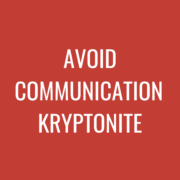Diversify your income in Covid-19 with transcreation
The COVID-19 pandemic is forcing many people around the world to work from home and we’re facing a recession because of it. Many are finding ways to adjust under quarantine through productivity tips, especially since the lack of social interaction is making work from home much harder. But even for those fortunate enough to work from home, some had their hours reduced. They are struggling to make ends meet now that the global economy is winding down and facing a recession. Now couldn’t be a more appropriate time to look for other alternative sources of income through freelancing. To be more specific, multilingual copywriting.
If you have a knack for writing and also happen to speak a foreign language, then why not try multilingual copywriting and offer some transcreation services? There are almost limitless applications for foreign language skills i.e. translation, interpretation, and of course, writing. Becoming a multilingual copywriter and promoting your transcreation skills, is a great alternative to still obtain financial security in these difficult times.
You may be asked to know the difference between transcreation copywriting and translation and it may seem similar on the surface. You’ll know exactly why clients specifically would choose translation services over transcreation services and vice-versa. All in all, here is everything you need to know about multilingual copywriters and offering transcreation services.
 How Serious Is the COVID-19 Recession?
How Serious Is the COVID-19 Recession?
First, let’s take a look at the severity of the global economic situation to get a better understanding of the crisis. How serious you ask? Serious enough that even the $7 trillion worth of combined stimulus packages, the largest of its kind. Industries, particularly the travel and hospitality industry are taking an unprecedented nosedive as a result of travel restrictions, quarantine measures, and social distancing policies.
Hundreds of millions of people around the world are temporarily out of work and there’s no telling if they’ll be able to return to their jobs or even find one any time soon. Those fortunate enough with jobs are frontline workers or those working from home. Although freelancing and working online, in general, was already popular before the pandemic, people now have little to no choice.
Of course, there are plenty of essential on-site jobs but the thought of venturing outdoors and the risk of possibly infecting you and your loved ones is enough reason for people to stay indoors. The more people stay indoors, the sooner our economy and society recover.
It’s best to consider what are our options as of now. The Covid-19 pandemic has forced most businesses to shut down and even nearly bankrupt entire industries and furloughed workers. And those with reduced hours are struggling to keep their finances afloat. However, even as global assets are wiped out, your personal assets, namely your foreign language and writing skills, aren’t.
What is a Multilingual Copywriter?
Copywriters are frequently responsible for multiple content creations in business marketing. From advertisements, slogans, articles, web pages, social media content, brochures, emails, etc. They help convert readers into potential leads, and then into buyers and clients. And multilingual copywriting is simply copywriting done in different languages but with more style and creative flare than plain, old translation. It is more commonly known as transcreation.
But you may ask, why can’t translators do the job instead? Isn’t it easier for clients to just have what they have written translated? Why are multilingual copywriters necessary anyway? We’ll expand on this later on in the article. On the surface, it does seem that translation and multilingual copywriting (or transcreation) is somewhat the same. But the fact of the matter is that both translation and multilingual copywriting both fulfil different demands.
Now, let it be clear again that this is for those with advanced foreign language skills and good writing skills. After all, writing itself, the more you get into the details, isn’t easy and your English professor might have told you by then. How much more is writing in a nuanced and persuasive way in a second language?
Nevertheless, if you want to increase your reach, try social media and advertise your services there on your account, pages, and group forums. For newbie freelancers of all types, selling yourself is not easy especially in the beginning.
Even if you don’t have the experience, there are clients who are willing to give you your first break—assuming you know how to sell yourself and that your rate is worth their risk. They can gauge your quality and potential as a copywriter if you can give them samples of your past work (and experience if applicable).
 How to become a good multilingual copywriter?
How to become a good multilingual copywriter?
According to the United States Bureau of Labor Statistics, the average copywriter entering the field will have at least a Bachelors Degree. However, you will find plenty of copywriters with no degree. Their results and experience, along with good work ethic and attitude, is what makes them worth every ounce of their salt.
So what makes a good multilingual copywriter?
- Professional research skills. Crafting a persuasive message of any kind requires professional research skills. You’ll have to consider not only what the clients want but also what audiences want, including the most effective ways to capture their attention.
- Good writing skills and a sense of persuasion. Marketing is all about persuasion. But what makes a persuasive slogan or story is good writing skills. You should be able to critique your own work objectively. From what you’ve researched about your client and their target audience, you should find the right linguistic tone, expressions, and vocabulary.
- Write at an acceptable pace. Not that you should speed-write but the fact of the matter is that clients have deadlines.
- Great listening skills and customer service. Copywriters work with their clients at a personal level. If you think about it, you’ll be partly responsible for realizing their personal dreams and ambitions. You’ll be engaging in multiple brainstorming sessions and back-and-forth correspondences. All in all, you should be able to work amicably with clients and to accurately bring their ideas, yours included, to life in writing.
Now, a good multilingual copywriter is all of that and more;
- Advanced foreign language skills. We have already talked about this before but it won’t hurt to mention again that this is naturally expected of multilingual writers, let alone copywriters. This is the same expectation for all jobs that require adept foreign language skills such as translation.
- Knowledgeable about the target foreign audience. Part of learning any language is studying the history, culture, and society of its native speakers. In addition to thorough audience research and linguistic manoeuvring, you have to be aware and show understanding of the target audience’s cultural and social nuances—including taboos.
Localization in transcreation.
If that last point sounds familiar, that’s because it’s under a concept called localization. So what is localization? Localization is the concept of curating content for it to resonate well with an intended audience. It might sound like a general strategy but localization is mostly applicable in globalization strategies when targeting foreign audiences. As mentioned earlier, localization is also heavily applied in the field of transcreation. Translators need to find the most accurate and appropriate angle when translating for a specific audience.
Localization in itself has multiple applications in diverse industries. They have all made great and effective use of it through translation, interpretation, transcreation, market research, product optimization and more.
That being said, multilingual copywriters can learn a lot from other language professionals in similar fields, particularly translators. Actually, multilingual copywriters and translators can both benefit from learning from each other. Particularly learning about the best way to curate and localize a message for a specific audience. Well, it’s fair to say that all language professionals in either similar or contrasting fields inspire each other’s work.
All in all, good multilingual copywriters comprise all of the qualities listed above and perhaps even more. If you’ve just started, of course, it’s unfair to hold you to the absolute highest standard. But as you go along, you’ll naturally be incorporating these in your work process as clients will also expect it.
What is the demand for copywriters, particularly multilingual copywriters?
In recent years, the explosion of content and business websites created an uptick in demand for copywriters. It’s quite difficult to actually find reliable stats on the exact demand for general copywriters. But there is some available data regarding copywriters based in the UK (as mentioned earlier). Even with little concrete data available, we can use past trends in other countries and connect the dots.
According to a recent article on the Business2Community website, “49 per cent of B2B buyers rely more heavily on content to research their purchase decisions than they did last year, and 87 per cent of B2B companies will create digital content in 2019”. Thus, it is necessary that copywriters maintain above-average language skills in at least one language.
But what about multilingual copywriters? I, and probably everyone else (unless they’re industry leaders), scraped the bottom of the barrel looking for relevant data. But as mentioned earlier, we can look at recent trends to make well-researched assumptions.
As you know, there has been an explosion of content on the internet. Millions of pages are uploaded all the time and non-English digital audiences make up less than half of the world’s digital audience. Major international digital audiences include Chinese, Indian, Spanish, Brazilian, Japanese, Korean, and European web users.
Of course, one can expect anything in these difficult and unpredictable times. But consider the facts. Hundreds of millions to even billions of people around the world are hunkering down at home under quarantine. You can bet a hefty sum that plenty of those people are looking at their computers and phones wondering what to read next. You do the math; billions of multilingual audiences at home = increase demand for multilingual copywriters. Many marketers are already adjusting their content strategy and you should too.
Should clients ask for translation services?
As promised earlier, let’s go back to the concern as to whether or not freelance translators can simply translate a work instead of clients hiring a multilingual copywriter who transCREATES a text. Becoming a translator is also a popular side-gig and career choice for those with advanced foreign language skills. You might be worried that they are your source of competition. Ultimately, you deserve to know more about your future job in detail so that you can market your services effectively.
On the surface, a multilingual copywriter and a translator’s responsibilities may overlap. But the simple truth is that the responsibilities, skills and resources in translation and multilingual copywriting is fundamentally different.
A translator’s responsibilities.
Translation is simply replicating content written in a source language to a target language, and not about writing fresh content. A multilingual copywriter will have to generate content from scratch per client. With this, translated material is content from the translator themself. However, clients have made most of the work, so it’s not exactly the same story with multilingual copywriters.
A different work process.
Although multilingual content writers can perform translation due to their advanced foreign language skills, they don’t work in the same way that translators do. Many freelance translators work for translation agencies that provide them with translation resources.
These resources include computer-assisted translation (CAT) tools such as machine translation (MT) systems, a translation glossary, translation management software, etc. They help make translators more productive and churn out more translations as fast as they can come in while also adhering to quality.
On the other hand, multilingual copywriters are likely to not have the same specialized resources as a translator. Multilingual copywriters have to largely depend on the client’s source material as their basic blueprint. In saying that, they mostly rely on their research and writing skills as their main resource. Sure, they also use grammar checkers, word processing software, and etc. but nothing as specialized as an MT system or a translation glossary.
Project completion.
Although it depends on the translator, many translation projects only take a matter of hours to a few days at most to complete. However, there are indeed plenty of other translation projects that take a couple of weeks to get done and actually require a team instead of just one translator. These are either due to the sheer volume of paperwork in the translation project, subject specialization, both, and/or client guidelines.
That being said, some copywriting projects, in general, are completed in a matter of days to less than a week. But copywriting, good copywriting takes time. After all, making persuasive, meaningful, thought-provoking, and well-intentioned content from scratch requires plenty of research.
Of course, this depends on the project whether you’re working on a web page, blog post, or an advertising campaign. But generally speaking, copywriting can’t be rushed or else quality diminishes drastically. This also doesn’t include editing and revision time. It’s not common for clients to extend projects by days and even weeks on end for the sake of refining it.
Translation and transcreation are different forms of language services.
It should be clear by now that translation requires different skills compared to transcreation. Indeed, they both engage in foreign language application, but it’s how to fulfil specific client demands that make all the difference. So you see, you can rest easy knowing that translators and other language specialists won’t be your competition. In the end, they’re both different forms of language services.
That being said, many language service providers such as a translation agency actually do provide both translation services and transcreation and even content writing services under one brand. In fact, many clients are keen on utilizing every relevant language service to ensure that their content is up to standard and hits home among the target foreign audience/market.
With that, it’s not uncommon for clients to also request for localization services even after a translation or multilingual copywriting project. Localization services help them further refine their multilingual content. Not all content, of course, needs to be localized. But when the stakes are high such as a business conducting an international marketing strategy for the first time to a new foreign audience/market, then no expense is left spared.
Make the Best of Your Situation: Final Word.
As with all professions, there will be challenges. In a 2018 survey, common challenges among UK-based copywriters are mostly poor source materials and unrealistic expectations from clients. With this, that is what makes the difference between you and your competition. Specifically, the ability to communicate amicably with your client and to listen and interpret their needs as accurately as possible. There will be unruly clients of course. Which is the same in all industries, the translation industry and language service industry included.
But in the end, transcreation can be very rewarding especially since it’s a niche form of copywriting with seemingly unlimited potential. All in all, strive to make the best of your situation. Once the economy recovers and we can go about our usual business once again, you’ll be equipped with another skillset ready to cater to the world’s need for multilingual content.
Continue Reading: Virtual Coworking: could it make you a more productive freelancer?

 Multilinual-transcreation-copywritercollective
Multilinual-transcreation-copywritercollective challengesoffreelancers-copywritercollective
challengesoffreelancers-copywritercollective
 opywriter’s-perspective-copywritercollective
opywriter’s-perspective-copywritercollective demanding-workload-copywritercollective
demanding-workload-copywritercollective work-lifebalance-copywritercollective
work-lifebalance-copywritercollective ParentWorking-copywritercollective
ParentWorking-copywritercollective
 copywritingtips-copywritercollective
copywritingtips-copywritercollective